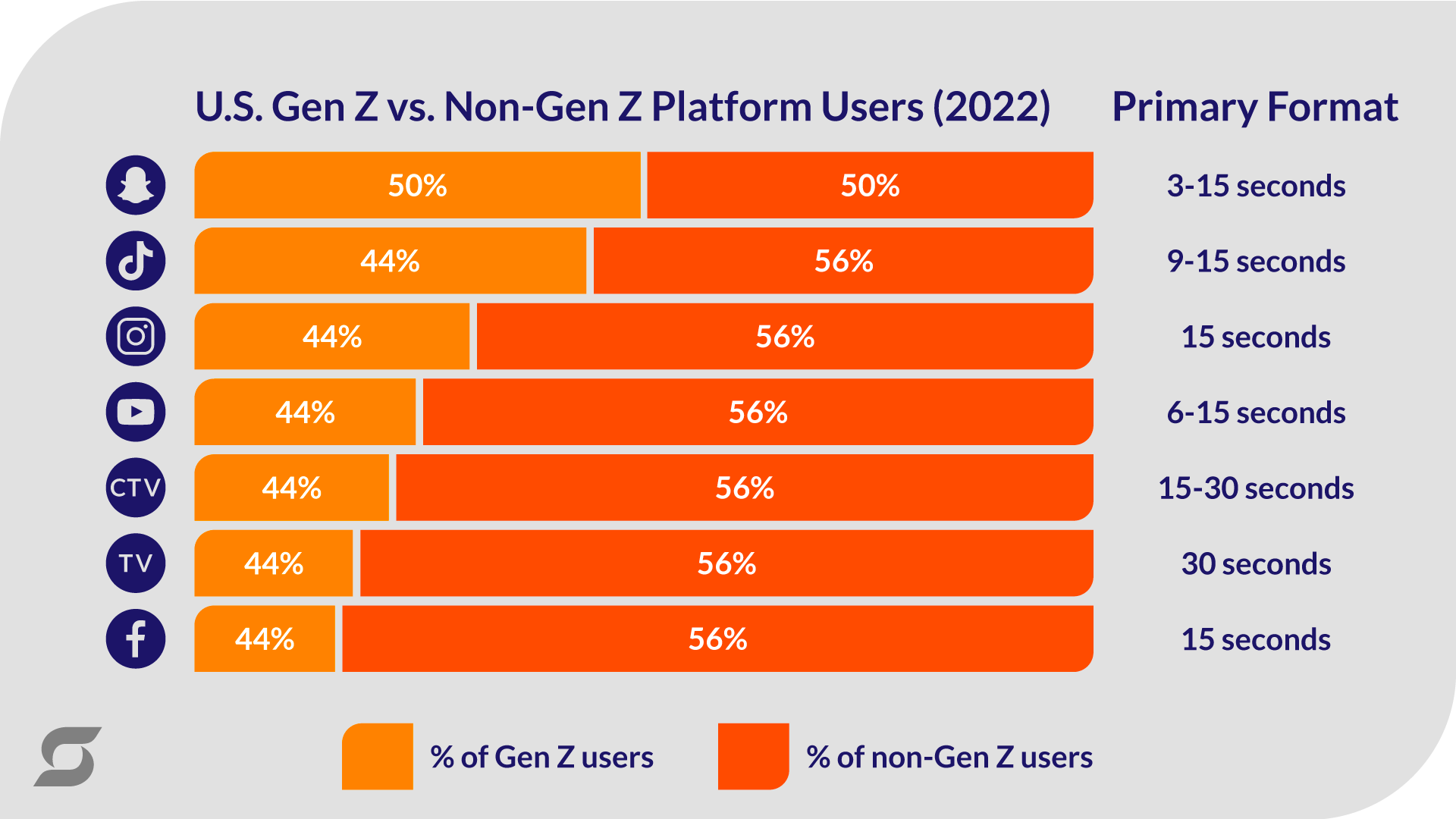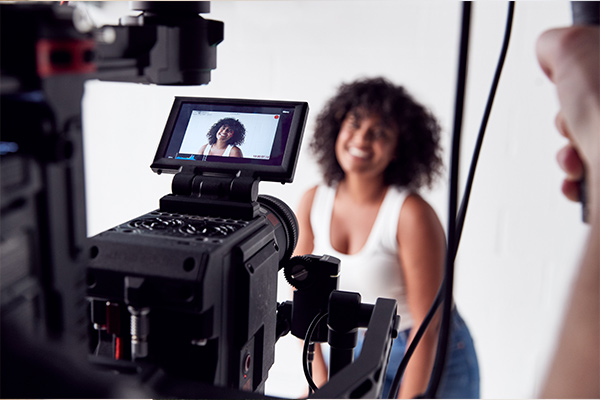As marketers, we’re often asking, “How should my brand be talking to consumers?” Regardless of channel, audience, and objective, we know that creative carries a large importance when it comes to advertising campaigns. In fact, effective social media marketing creative is just as important as media planning and optimization. However, creative messaging always seems to be a moving target given our ever-changing media landscape. What works on TV likely won’t work on Meta, and what works on Meta likely won’t succeed on TikTok.
Why is having a creative strategy important?
Taking a creative-first approach with any type of advertising campaign is crucial in:
- Capturing your audience’s attention to differentiate the brand
- Enabling brand recall as well as buzz and excitement amongst consumers
- Increasing engagement
Creative strategies are not – and should not be – a one-size-fits-all approach. To find creative success, a brand’s strategy must differ by tactic, platform, and audience because:
- Different audiences have different interests and needs
- Different platforms have best practices for flight, format, size, and resolution
- User interactions vary from platform to platform, making it important to work with the inherent characteristics of that specific platform
What does this mean for digital advertising specifically?
User behavior and consumption habits vary greatly by the different elements (channel, audience, platform, objective) present within any campaign. There are many variables to think about for effective social media marketing creative:
- User behavior: When, how, and why users are interacting with one platform vs. another. For example, users tend to watch video content on YouTube longer than they would on Instagram.
- Platform features: Differences in targeting options, creative formats, filters, hashtags. While you can leverage a plethora of data segments and signals within the Programmatic ecosystem, there’s much less to tap into on Meta.
- Algorithms: Ensures creatives are seen by the right audience. How my content gets seen on TikTok is different from how my content bubbles up in Pinterest’s ad auction.
- Brand Identity/Strategy: What type of tone and content should your brand present. TikTok tends to be more playful and UGF-focused, whereas LinkedIn should maintain a strictly professional tone.
- Goals & Objectives: Using different language and CTAs based on where this falls within the marketing funnel.
- Awareness: tell brand story & educate consumers
- Consideration: leverage brand value props that encourages users to visit site
- Conversion: show how product is used and why it’s impactful for consumers
It’s clear that creative strategies vary greatly, and this couldn’t be more true when looking at the different digital platforms like Meta (Facebook & Instagram), TikTok, and YouTube. Outcomes within digital campaigns – especially on social – are becoming more contingent on effective social media marketing creative. In fact, Meta cites that over 56% of all auction outcomes can be attributed to creative (2023 Meta Performance Marketing Summit).
As time with social media platforms continues to increase year over year and Apple’s iOS privacy changes become more and more restricted, the importance of platform-specific content is no longer a nice-to-have for marketers. It’s needed to be successful within the social space.
How should brands use strategy to make effective social media marketing creative?
When looking at social-specific creative strategies, all common digital considerations (platform, audience, ad unit, campaign objectives, past/present performance) need to be taken into account. These factors influence how often creatives should be refreshed. While there’s no secret sauce to the social creative formula, having a better understanding of what creative diversification is, how creative strategies should vary by ad unit, and what this means for each platform’s nuances can lead to more effective campaigns.
What is creative diversification and why is it important?
As a general rule of thumb, creative diversification allows brands to use a variety of creative formats and messages. There are a few ways to diversify creative:
- Creative format diversification includes new formats, placements, mediums, and image styles (Example: utilizing static assets vs. utilizing video assets)
- Creative concept diversification includes visual direction, messaging, and storytelling (Example: utilizing testimonial messaging vs. product messaging)
Tapping into different types of assets and concepts is crucial in effective social media marketing creative. Creative plays a major role in auction outcome, and creative fatigue can cause drops in performance: Meta cites that after 4x exposures to the same ad, a user’s likelihood of purchasing drops by ~60% (2023 Meta Performance Marketing Summit). Creative diversification can drive increased efficiency and incremental reach.
How should creative strategies vary by different ad units?
Static and video creatives perform very differently in the digital ecosystem – especially from a social media standpoint.
- Static ads typically reach a wider audience and tend to be less expensive to produce. They also put your call-to-action front and center, so it’s crucial to use strong copy that clearly communicates your brand’s benefit to potential users, enticing them to click.
- Video ads tend to be effective attention grabbers and deliver high ROIs. On average, people retain 95% of what they see in a video, versus 10% of what they read in an ad (2022 QuickFrame by MNTN). Because video goes beyond static marketing by combining audio and visual cues, they’re extremely important to include within any social media creative strategy.
What platform nuances need to be taken into account?
Video creatives should cater to the platform. Differences in how consumers use social media platforms couldn’t be more perpetuated than with video consumption. Video ad lengths, content style, and creative messaging should vary based on the platform. Below are some nuances to keep in mind when building platform-specific video content:
- Not all platforms are sound on. FB/IG and Pinterest recommend building creatives for a sound-off environment, whereas TikTok is sound on. TikTok strongly recommends including background music or sound within all videos.
- The type of content and style of messaging also changes depending on the platform. Think life-hacks, UGC, and trends on TikTok vs. brand differentiators, value props, and quick-hitting CTAs on Facebook.
- The length of video assets should vary depending on the platform – as well as the target demographic using the app. For example, Facebook tends to skew older in terms of age, so content :15s in length tends to perform better.
On platforms like Facebook and Instagram, ad units should differ, even within placements across the same platform (i.e. Stories/Reels vs. Feed on FB/IG). Video-focused formats like Reels behave differently on FB/IG than standard in-feed videos. This format is built-for-mobile, meaning it is a full-screen video that plays between organic posts.
Reels-specific video content should follow established trends and be experimental in nature, giving these videos a TikTok-esque look and feel. In contrast, videos conveying a clear, simple message that make people take action while showing off the product/brand are more suited for in-feed FB/IG placements. Capitalize on longer-form content within Reels, and use succinct :15s videos in the feed.
Static creatives have different best practices on Pinterest vs. FB/IG.
- Pinterest static recommendations:
- Ensure that high-quality, lifestyle assets are leveraged
- Showcase the product front + center, including tasteful branding
- Use a vertical canvas (2:3 ratio)
- Write clear + concise text overlays with clear CTAs
- Facebook/Instagram static recommendations:
- Show people using your product/service
- Use high-resolution images
- Keep the attention of your audience by cropping tightly around the important part of the image
- Use text overlays with a modern, clean font in a large enough type size and a contrasting hue
Scale’s approach to social creative testing.
To better produce effective social media marketing creative and understand which creatives are converting, Scale leverages social testing.
While there isn’t an exact science to creative testing, below are the general guidelines we keep in mind at Scale when testing new concepts and monitoring creative fatigue:
- Explore historical creative performance and set clear objectives. What has been done in the past? What has worked well vs. what hasn’t? What do you want to learn? What are you aiming to achieve with this creative/platform?
- Create distinct concepts for testing. Make sure there are plenty of variations, headlines, CTAs, colors, etc. with different look, feel, and messaging to test. Segment your testing strategy to avoid testing too much at once.
- Align on testing methodology and duration. Determine how to best set up and structure your test. While there are multiple ways to test (A/B, Multivariate, Geo and Casual Impact, etc.), make sure the actual testing parameters are aligned with the test’s objectives. Run for a minimum of 4-6 weeks to ensure assets receive enough delivery and impression weight to see results.
- Conduct a full creative analysis. Use metrics that align with the test’s objective to define success. In analyzing performance, look for trends and themes amongst top performers.
- Test again! There’s immense value to an always-on creative testing approach. Creative is an always-moving target, so keep evolving these tests and frameworks.
Get in touch to learn more about how Scale Marketing uses insights to drive growth and business results for companies like yours.






